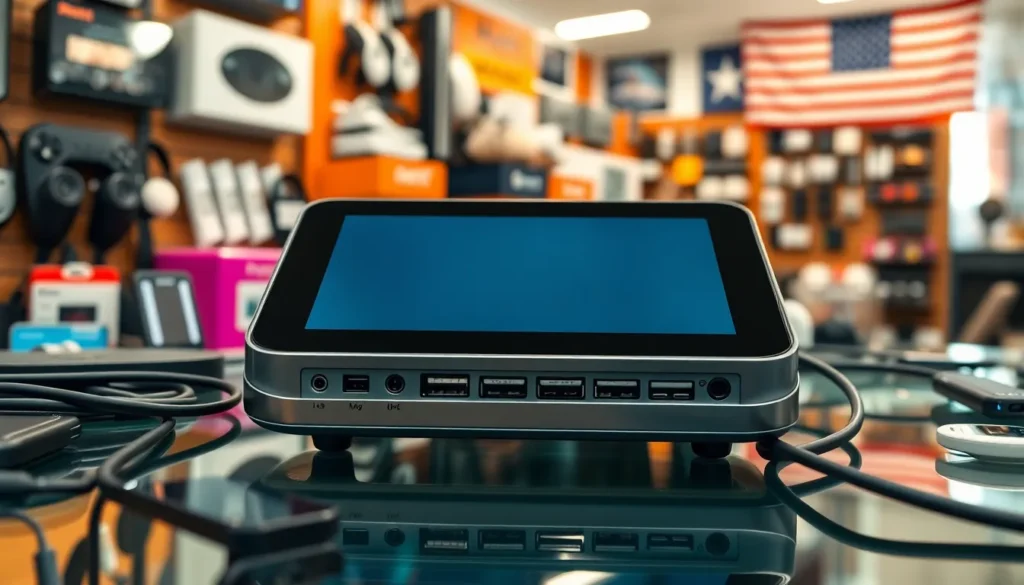Ever tried selling something to your pet cactus? It’s a futile task, right? Unlike that cactus, Google Smart Shopping is here to help you reach your sales goals without the hassle. If you’re looking to unlock the secrets of this innovative advertising tool, you’ve hit the jackpot. This article dives deep into what Google Smart Shopping is, its benefits, how it operates, and even how to set it up. Let’s embark on this journey to transform your online business into a flourishing garden.
Table of Contents
ToggleWhat Is Google Smart Shopping?

Google Smart Shopping is a dynamic advertising solution designed to simplify the process of promoting products across Google’s vast network. It combines standard Shopping and display remarketing campaigns into one, allowing businesses to reach potential customers across various platforms. Instead of manually managing separate campaigns, Smart Shopping automates many aspects, from bidding to ad placements, using machine learning to optimize for better performance.
This tool caters to both large retailers and small businesses, making it accessible and versatile. Smart Shopping campaigns can appear on Google Search, YouTube, and Gmail, increasing visibility wherever potential customers may lurk. The ultimate goal? Drive higher conversion rates while making life a little easier for advertisers.
In essence, Google Smart Shopping isn’t just a tool: it’s a bridge connecting sellers with eager shoppers. It’s like having a personal shopper who knows exactly what your audience wants.
Benefits of Google Smart Shopping
The advantages of Google Smart Shopping are as plentiful as a cornucopia of goodies on a holiday table. Here are some key benefits that make it stand out:
- Automation: Marketing can be a full-time job, but Google Smart Shopping reduces the workload. Automated bidding and targeting mean you can spend less time fiddling with settings.
- Cross-Platform Reach: With ads showing on YouTube, Google Search, and across the Display Network, you won’t miss any opportunities. Your products get exposure wherever potential buyers are looking.
- Enhanced Conversion Tracking: Smart Shopping uses sophisticated algorithms to predict which prospects are most likely to convert, leading to more sales for less effort.
- Streamlined Performance Insights: Gain valuable insights into ad performance without diving into complex reports. Google provides simplified metrics that inform future marketing strategies.
- Visual Appeal: Shopping ads feature attractive images of products, which increase engagement compared to plain text ads. After all, a picture is worth a thousand words, and potentially a few extra purchases.
Whether one is a seasoned e-commerce expert or a new entrepreneur, these benefits provide robust support for scaling business efforts.
How Google Smart Shopping Works
Understanding how Google Smart Shopping works can feel like unraveling a gift on your birthday, exciting and revealing. At its core, Smart Shopping leverages machine learning to automatically manage ad placements and bidding strategies.
Key Features:
- Product Feed: The journey starts with a well-structured product feed. This data-driven list of your products, including details like titles, descriptions, and images, forms the backbone of your Smart Shopping campaign.
- Conversion Goals: Depending on your business objectives, you can set various conversion goals. Whether it’s maximizing website traffic or generating more leads, Google adapts accordingly.
- Machine Learning: Math isn’t just for classrooms. Google’s AI analyzes historical data and user behavior to determine the most effective strategies. This process optimizes campaigns without constant supervision.
- Dynamic Ads: Your audience experiences dynamic ads tailored to their interests and behaviors. This ensures they see the most relevant products, increasing the chance of conversion.
When combined, these elements create a fluid and adaptive advertising experience. Advertisers often sit back while Google takes the wheel, ensuring efficiency and effectiveness.
Setting Up Google Smart Shopping Campaigns
Setting up Google Smart Shopping campaigns might feel daunting, but follow these steps to ensure a smooth launch:
- Google Merchant Center: Start by creating or accessing your Google Merchant Center account. This is where your product feed lives, and it’s vital for campaign success.
- Upload Your Product Feed: Ensure your feed is optimized with accurate data about your products, think titles, prices, descriptions, and images. Google evaluates this information to showcase your products effectively.
- Link Your Campaigns: After setting up your Merchant Center, it’s time to connect it to Google Ads. This is like introducing two friends who will benefit from knowing each other.
- Create a Smart Shopping Campaign: Go to the Google Ads dashboard, select “Campaigns,” and choose “Smart Shopping.” Follow the prompts and fill in necessary details like budget and target location.
- Set Goals: Define your goals, do you want to drive sales, traffic, or leads? Clear objectives help Google optimize your campaign effectively.
- Launch and Monitor: Once everything is set, launch your campaign. Just remember, monitoring performance is crucial. Adjust budgets, refine targets, and watch your sales grow.
Best Practices for Google Smart Shopping
To realize the full potential of Google Smart Shopping, apply these best practices:
- High-Quality Product Images: Investing in professional images contributes to higher engagement. A stunning visual can make all the difference in enticing clicks.
- Compelling Product Descriptions: Write clear, detailed descriptions that highlight essential features. The right words can influence a shopper’s decision.
- Regularly Update Your Feed: Keeping your product feed current with inventory levels, prices, and promotions is essential. Outdated information can lead to customer dissatisfaction and lost sales.
- Test and Iterate: Don’t settle for the status quo. Actively test different strategies, ad formats, and messaging to discover what resonates best with your audience.
- Use Remarketing: Smart Shopping allows for remarketing options, so retarget customers who visited but didn’t purchase. A gentle nudge can possibly convert them into buyers.
Troubleshooting Common Issues
Even the best systems encounter hiccups. Here are some common problems advertisers may face with Google Smart Shopping and how to address them:
- Low Click-Through Rate (CTR): If ads aren’t receiving clicks, it could be due to unappealing images or descriptions. Revise and ensure they capture attention.
- Underperforming Campaigns: Analyze product performance data. Identify products not achieving expected results and consider adjusting bids or rethinking promotional strategies.
- Disapproved Ads: Sometimes, ads may get disapproved due to policy violations. Check Google’s policies to fix non-compliance issues promptly.
- Irregular Sales Patterns: Sales might fluctuate unexpectedly. Review external factors like market conditions or holiday seasons that may affect customer behavior.









